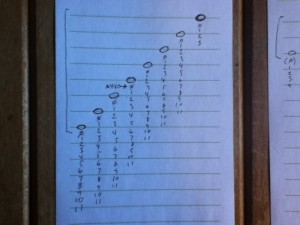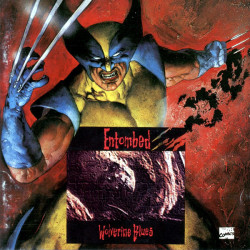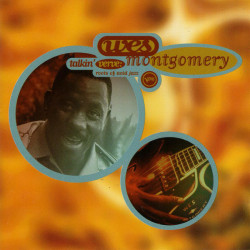I made some quick sketches for my idea for a new type of staff system to get it out there. Each octave gets a line and the numerical value is written directly below. The standard graphical system for time value of the notes (whole/half/quarter/etc.) can still apply. Y’know, if yr into that sort of thing. (Shown is whole notes.) This is not written as something you’d play—altho technically you could mash down 12 keys at a time—it’s just an idea what it would look like:
Note that this is for a grand piano with 88 keys starting on low A. Most keyboards start on C and have less octaves. If you’re writing everything like it’s going to be performed by an orchestra, conventional methods are just fine and you certainly don’t need help from a moron like me. However, I find that the goal of writing music like that is little much for a student and not what they want to do anyway. So the task of writing music seems impossible and they never even really try it. This system is instrument specific; whatever keyboard you’ve got gets it’s own kind of staff. So it’s not some abstract system of every possible note you are dealing with, which you then apply to the instrument and see it if can hit it, but a very clear layout of all the notes available to you on the instrument in front of you.
Let’s take a closer look at how this works on another instrument: the saxophone. Various saxophones come in different ranges and keys, but the fingerings for the named notes are always the same. (Except some have a low A key or a high F#.) But the octave doesn’t start on the A for the the sax, it starts on D. It’s purely a mechanical feature of the instrument:

(A440 is going to be in a different spot for alto/tenor/etc.—it’s where things get complicated. Don’t worry about it.)
Now, if you know anything about the saxophone, you can see I’ve made a terrible mistake and left out an entire octave. This is not really a problem right now, because like the earlier posts, if I just put this thing out all at once looking great and making sense, some asshole is just going to put it on a t-shirt and no one will care where it came from. And of course, hardly anyone would use this system for piano or saxophone, it’s mostly useful for string instruments that can alter their tuning and range. (And maybe even for singers.) If you can figure out how to do this already, good for you. But I’ll keep working on better ways to present the idea. %







Recent Comments